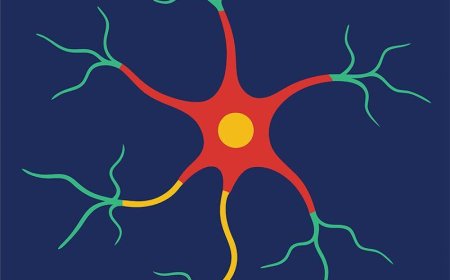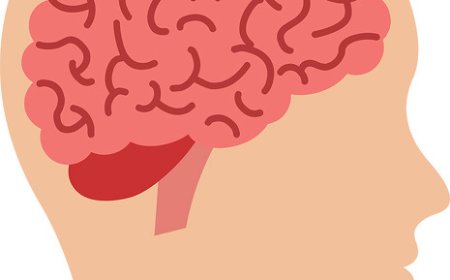Breathing and the Brain for Kids – How Your Body Controls Every Breath
Discover how the brain controls breathing for kids. Learn how your brainstem keeps you breathing automatically, even while you sleep, and why it’s essential for life.
🧠 Breathing and the Brain: How Your Body Controls Every Breath – A Guide for Students
You breathe about 20,000 times every day—even while sleeping, talking, or reading. But have you ever wondered how your body knows when to breathe? Or how your breathing changes when you run, laugh, cry, or feel nervous?
The answer lies in the amazing teamwork between your lungs and your brain. Breathing might feel automatic, but it’s actually guided by a powerful part of your nervous system that constantly checks in with your body and makes changes to keep everything in balance.
Let’s take a closer look at how your brain makes sure you keep breathing at just the right speed—all day and night.
🧠 The Brainstem: Breathing’s Command Center
The part of your brain in charge of breathing is called the brainstem, and more specifically, a section within it called the medulla oblongata. The brainstem is located at the base of your brain, where it connects to the spinal cord.
The medulla oblongata has a group of nerve cells known as the respiratory center. This center:
- Senses how much oxygen and carbon dioxide is in your blood
- Sends signals to your diaphragm and rib muscles to contract and relax
- Adjusts your breathing rate based on what your body needs
This means that even while you're sleeping or daydreaming, your brainstem is working hard to keep your breathing steady.
🧪 How Your Body Knows When to Breathe
Your brain doesn’t guess when to make you breathe—it listens to chemical messages from your body.
Special sensors in your blood vessels detect the levels of:
- Carbon dioxide (CO₂) – too much makes you breathe faster
- Oxygen (O₂) – too little also makes you breathe faster
- pH level – if your blood becomes too acidic, breathing increases to fix it
When the brain detects these changes, it sends messages through nerves to the diaphragm and intercostal muscles (the muscles between your ribs). These muscles contract, pulling air into your lungs, and then relax, letting you breathe out.
This system is fast and accurate—it adjusts your breathing within seconds to keep your blood just right.
🏃♀️ How Breathing Changes with Activity
When you move more, your body burns more energy and creates more carbon dioxide. Your respiratory center detects this and makes you breathe:
- Faster to take in more oxygen
- Deeper to fill more of your lungs
- With more strength to move more air
When you rest or sleep, your body doesn’t need as much oxygen, so your breathing slows down.
This is why you pant after running or breathe more gently when you’re calm. Your brain is always adjusting your breathing based on what you're doing.
😮💨 How Emotions Affect Breathing
Your emotions can change how you breathe, too. When you’re:
- Scared – breathing may become fast and shallow
- Excited – breathing quickens
- Sad or crying – breathing may become choppy
- Calm – breathing slows and becomes smooth
Because breathing and emotion are connected, you can actually use breathing to change how you feel. That’s why deep breathing is used to help with:
- Stress and anxiety
- Anger or frustration
- Focusing and calming down
Practicing slow, deep breaths can help your brain and body feel more relaxed.
🎉 Fun Facts About Breathing and the Brain
- You can hold your breath voluntarily, but your brain will eventually take over!
- Babies breathe faster than adults—up to 40 times per minute
- Your brain adjusts breathing before you even start exercising
- Laughing is a special kind of breathing
- You can change your breathing, but your brain will never forget to do it automatically
🧠 Vocabulary
- Brainstem – The lower part of the brain that controls automatic functions
- Medulla oblongata – The part of the brainstem that controls breathing
- Respiratory center – A group of nerve cells that control breath rate
- Carbon dioxide (CO₂) – A gas your body removes when you exhale
- Oxygen (O₂) – A gas your body uses to make energy
- Diaphragm – The main muscle used to breathe
- Intercostal muscles – Rib muscles that help move the chest for breathing
- Nerves – Pathways that carry signals between the brain and body
- pH level – A measure of acidity in your blood
- Voluntary – Something you can control on purpose
✅ Interactive Quiz: Brain-Breath Connection
1. What part of the brain controls automatic breathing?
A. Frontal lobe
B. Cerebellum
C. Medulla oblongata
D. Hippocampus
2. What happens when your carbon dioxide level gets too high?
A. Your heart stops
B. You breathe slower
C. You breathe faster
D. You sleep
3. What muscles help you breathe in and out?
A. Abdominal muscles
B. Diaphragm and intercostals
C. Leg muscles
D. Face muscles
4. What does the respiratory center in the brain do?
A. Makes blood
B. Sends messages to help you breathe
C. Controls your eyes
D. Helps you chew
5. How can deep breathing help you feel better?
A. It makes you dizzy
B. It wakes you up
C. It relaxes your brain and body
D. It cools your feet
🧒 Kid-Friendly Summary
Your brain controls your breathing all day and night! It uses a part called the medulla oblongata to send signals to your lungs and muscles. This makes sure you get enough oxygen—even when you’re sleeping, running, or feeling nervous. You can also use your breath to calm down when you're stressed. That’s why breathing is so powerful!




















































